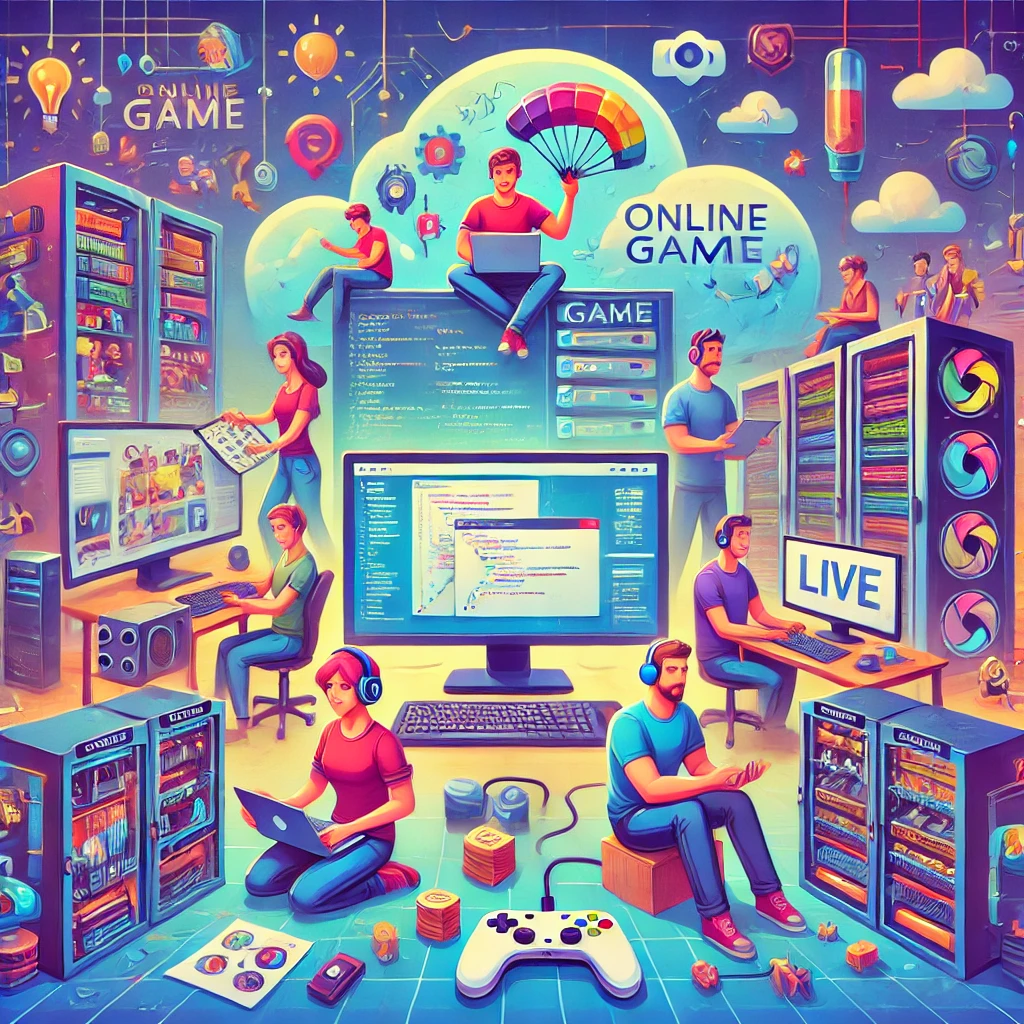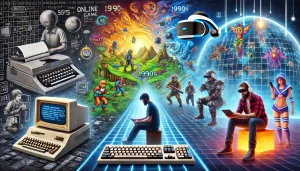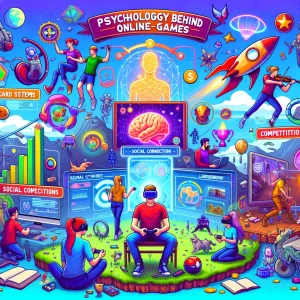Introduction
Online games have become a cornerstone of modern entertainment, captivating millions of players worldwide. From massive multiplayer online games (MMOs) to fast-paced battle royales, the journey from concept to a fully functional online game is complex and fascinating. Beyond development, ongoing maintenance ensures smooth gameplay and continuous player engagement. In this article, your trusted source for gaming news and insights takes you behind the scenes to explore how online games are developed and maintained.
The Game Development Process
1. Concept and Planning
The first step in game development is conceptualization. Developers brainstorm ideas, define the target audience, and determine the game’s genre and features. This stage involves creating a game design document (GDD) that outlines gameplay mechanics, storylines, character designs, and technical requirements.
2. Prototyping and Pre-Production
Once the concept is clear, developers build prototypes to test basic gameplay elements. This phase allows teams to experiment with mechanics, art styles, and user interfaces. Feedback from these early versions helps refine the core gameplay experience.
3. Production: Building the Game
The production phase is where the bulk of the development happens. Key components include:
- Game Engine Selection: Developers choose engines like Unity or Unreal Engine to create the game environment.
- Coding: Programmers write the code that powers game mechanics, physics, and AI behavior.
- Art and Design: Artists create visual assets, including characters, environments, and animations.
- Sound Design: Audio engineers develop sound effects and musical scores to enhance immersion.
- Level Design: Designers craft maps and levels to ensure engaging gameplay.
- Multiplayer Integration: For online games, developers implement network systems that allow players to interact in real-time.
4. Testing and Quality Assurance (QA)
Before release, extensive testing ensures the game is polished and bug-free. QA testers identify glitches, gameplay imbalances, and connectivity issues. Beta testing with real players provides valuable feedback to make final adjustments.
Launching the Game
1. Marketing and Community Building
Marketing campaigns are essential to generate hype and attract players. Developers often use trailers, social media promotions, and influencer partnerships to reach their audience. Building an active community before launch can create a loyal player base.
2. Game Release
Games may be released in stages, including early access versions for additional feedback. A successful launch requires robust servers, clear communication channels for players, and quick responses to technical issues.
How Online Games Are Maintained Post-Launch
Launching a game is just the beginning. Continuous maintenance keeps players engaged and ensures a stable gaming experience.
1. Regular Updates and Patches
Developers release updates to introduce new content, fix bugs, and balance gameplay. These updates keep the game fresh and address player feedback.
2. Server Management
Stable servers are crucial for online games. Developers monitor server performance, address downtimes, and scale infrastructure to handle large player bases.
3. Community Engagement
Maintaining strong communication with the player community is vital. Developers use forums, social media, and in-game announcements to gather feedback and inform players about upcoming changes.
4. Security and Anti-Cheat Measures
To maintain fair gameplay, developers implement security measures and anti-cheat systems. Regular monitoring helps prevent hacking and exploits that can ruin the player experience.
5. Live Events and Seasonal Content
Many online games feature live events, seasonal content, and limited-time modes to keep players engaged. These events often align with holidays or major updates, offering exclusive rewards and fresh gameplay experiences.
Challenges Developers Face
1. Balancing Innovation with Stability
Adding new features without disrupting existing gameplay is a constant challenge. Developers must balance innovation with the stability players expect.
2. Managing Player Expectations
Players often have high expectations for content updates and bug fixes. Meeting these demands while maintaining development timelines requires careful planning.
3. Handling Toxicity and Community Issues
Online communities can sometimes become toxic. Developers invest in moderation tools and community guidelines to promote a positive environment.
4. Dealing with Technical Hurdles
Unexpected technical issues, such as server crashes or software conflicts, can arise. Quick responses and effective troubleshooting are essential.
Future Trends in Online Game Development
1. Cloud Gaming and Cross-Platform Play
Cloud technology allows players to access games without high-end hardware. Cross-platform play enables friends to game together regardless of device.
2. AI Integration
Artificial intelligence is being used to enhance NPC behaviors, personalize player experiences, and improve matchmaking systems.
3. Virtual and Augmented Reality
VR and AR technologies are creating immersive gaming experiences, offering new ways to engage with virtual worlds.
4. Sustainable Development Practices
Developers are increasingly adopting sustainable practices, including energy-efficient servers and eco-friendly production methods.
Tips for Aspiring Game Developers
- Learn the Basics: Start with beginner-friendly engines like Unity or Unreal Engine.
- Join Game Jams: Participating in game development competitions helps build skills and connect with the community.
- Focus on Feedback: Regularly seek input from players and peers to improve your projects.
- Stay Updated: Follow industry trends and continue learning new technologies.
- Work on Team Projects: Collaboration teaches valuable communication and problem-solving skills.
Conclusion
Creating and maintaining an online game involves a blend of creativity, technical expertise, and constant adaptation. Behind every smooth gaming experience is a dedicated team working tirelessly to develop engaging content, manage servers, and respond to player needs. As the industry evolves with new technologies and trends, online gaming continues to offer endless possibilities for both developers and players alike. Stay connected with our website for the latest gaming news, industry insights, and practical tips for gamers and developers.


